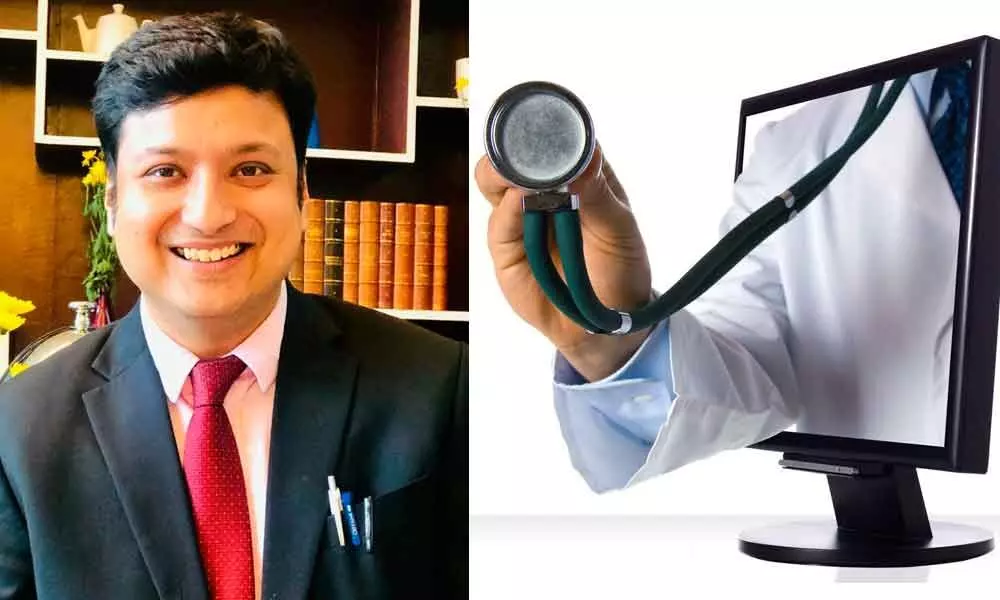Telemedicine enhances healthcare services through easy access
Healthcare industry looking for firm footing in uncertain landscape
image for illustrative purpose

Post the outbreak of the coronavirus pandemic in March, healthcare providers across the country launched or expanded telehealth platforms with the goal of moving as much care as possible into the virtual realm. In fact, concerned about exposing patients and their families to Covid-19, doctors and other health professionals started expanding telehealth services, using a variety of audio and video technology to make connections. Nearly eight months down the road, the pendulum seems to be swinging back in the other direction, with access to in-person care on the rise and the telehealth visits declining. Some suggest the shift marks a death knell for virtual care, while others feel that the healthcare industry is just looking for a firm footing in an uncertain landscape. Speaking to Bizz Buzz, Dr Subhrojyoti Bhowmick, clinical trial specialist and clinical pharmacologist, and Director (clinical research), Peerless Hospital, Kolkata, outlines the advantages and disadvantages of telemedicine and says that telemedicine is enhancing the healthcare service through an easy access
What is telemedicine and what are the guidelines in India? Could you please elaborate on the process of consultation?
The World Health Organisation defines telemedicine as: "The delivery of healthcare services, where distance is a critical factor, by all healthcare professionals using information and communications' technologies for the exchange of valid information for diagnosis, treatment and prevention of disease and injuries, research and evaluation, and the continuing education of healthcare workers, with the aim of advancing the health of individuals and communities." On March 25, 2020, the Ministry of Health and Family Welfare issued the Telemedicine Practice Guidelines, 2020, under the Indian Medical Council Act, 1956 and which superseded the Indian Medical Council (Professional Conduct, Etiquette and Ethics Regulation, 2002).
Seven elements to be considered before any telemedicine consultation is made are Context, Identification of RMP and Patient, Mode of Communication, Consent, Type of Consultation, Patient Evaluation and Patient Management.
Technology has its own set of strengths and limitations. What is your take on this with regard to the growth of telemedicine in this country?
Each technology comes with its own set of strengths and limitations. The video mode of telemedicine, apps, video on chat platforms, facetime etc are closest to an in-person consult. Real-time interaction, patient identification is easier. The RMP can see the patient and discuss with the caregiver. Visual cues can be perceived and inspection of the patient can be carried out. The limitations of the video format is, it is dependent on high-quality internet connection at both ends, or else it may lead to a sub-optimal exchange of information, since there is a possibility of abuse/ misuse. Ensuring privacy of patients in video consults is extremely important.
The audio platforms on phone, VoIP and apps have the strength of convenience and speed, unlimited reach, suitable for urgent cases, no separate infrastructure required and privacy is ensured, while the limitations are that non-verbal cues can be missed. This format is not suitable for conditions that require a visual inspection (eg, skin, eye or tongue examination) or physical touch. Also, patient identification can be an issue with the imposters representing the actual patient.
Text technologies as specialised chat-based, telemedicine smartphone apps, SMS, websites, messaging systems eg., WhatsApp, Google, Hangouts and FB Messenger have the strength of being convenient and quick, where documentation and identification may be an integral feature of the platform. This mode is suitable for urgent cases or follow-ups. Second opinions provided by the RMP has enough context from other sources. Separate infrastructure is not required and it can be real-time. The technology has its limitations as apart from the visual and physical touch, text-based interactions also miss the verbal cues. It is difficult to establish rapport with the patient and one cannot be sure of the identity of the doctor or the patient.
Asynchronous technologies like e-mail, fax and recordings have the strength of convenience and easy to document with no specific app or download requirement. Images, data and reports can be readily shared. No separate infrastructure is required and finally it is more useful when accompanied with test reports, and follow-up and second opinions. But, the technology has its limitations as it is not real-time interaction. Only a one-way context is available, relying solely on the articulation by the patient. The patient identification is only document-based and is difficult to confirm. Non-verbal cues are missed and there may be delays as the RMP may not go through the e-mail immediately.
What are the advantages and disadvantages for the patients and healthcare providers?
Among the advantages for patients who benefit through telemedicine are lower costs, improved access to healthcare, preventive care and convenience. The benefits for healthcare providers include reduced overhead expenses, additional revenue stream, less exposure to illness and infections, and patient satisfaction.
Disadvantages for patients do not include insurance coverage, protecting medical data and care delays. Disadvantages for healthcare providers are licensing issues, technological concerns and inability to examine patients.

